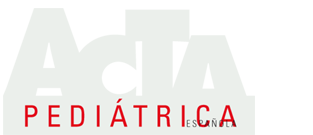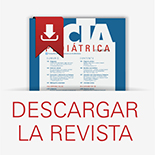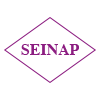Resumen
Introducción: El objetivo de este estudio es realizar una aproximación cienciométrica al área de investigación neonatológica en España en el periodo 2002-2006 a través de las herramientas bibliométricas que proporciona la Web of Knowledge (WoK).
Material y métodos: Estudio bibliométrico en dos bases de datos de WoK (Science Citation Index y Journal Citation Reports) en los años 2002-2006 de los artículos relacionados con la investigación neonatológica en España. Variables analizadas: autores, institución, tipo de documento, revista, factor de impacto (FI) y citas.
Resultados: Se recuperan 157 artículos (19 de 2002, 26 de 2003, 31 de 2004, 39 de 2005 y 42 de 2006). Predominio de artículos originales (71%) y de estudios colaborativos (70%). Escasa investigación básica (3%). Incremento progresivo del FI total (22,142 en 2002 y 104,171 en 2006) y del FI medio (1,165 en 2002 y 2,481 en 2006). Patrón de publicación en tres grupos de revistas: de pediatría general, de neonatología y nacionales. Se identifican grupos de investigación en hospitales terciarios, secundarios y en grupos colaborativos. No existe relación entre el FI de la revista en que se publica un artículo y las citas recibidas por el mismo. Las áreas de investigación más citadas versan sobre el uso de oxígeno en la reanimación del recién nacido y sobre la infección por el virus respiratorio sincitial.
Conclusiones: El área de investigación neonatológica en España presenta una progresiva mejora de su «impacto» en los 5 años de estudio, tanto desde el punto de vista cualitativo (número de artículos en Science Citation Index) como cualitativo (FI total y medio).
Abstract
Introduction: The aim of this study is to take a scientometric approach to the Neonatology research area in Spain during the period from 2002 to 2006 using the Web of Knowledge (WoK) bibliometric tools.
Method: A bibliometric study in two WoK databases (Science Citation Index and Journal Citation Reports) involving articles related to neonatology research in Spain published between 2002 and 2006 was conducted. The variables analyzed were authors, affiliation, document type, journal, impact factor and citations.
Results: One hundred fifty-seven articles, mostly original articles (71%) and collaborative studies (70%), were retrieved (19 from 2002, 26 from 2003, 31 from 2004, 39 from 2005 and 42 from 2006). Clinical research was scarce (3%). There was a progressive increase in the total impact factor (22,142 in 2002 and 104,171 in 2006) and in the average impact factor (1,165 in 2002 and 2,481 in 2006). The publication pattern was distributed into three groups: General Pediatrics, Neonatology and Spanish journals. Several research teams were identified in Spanish tertiary hospitals, secondary level hospitals and collaborative networks. No relationship was observed between the impact factor of the journal in which the article was published and the number of citations received. The most frequently cited areas were related to the use of oxygen in the reanimation of the newborn and to respiratory syncytial virus infection.
Conclusions: Neonatology research in Spain in the period from 2002 to 2006 showed a progressive improvement in its impact, both from a quantitative (number of articles in the Science Citation Index) and a qualitative perspective (total and average impact factor).














